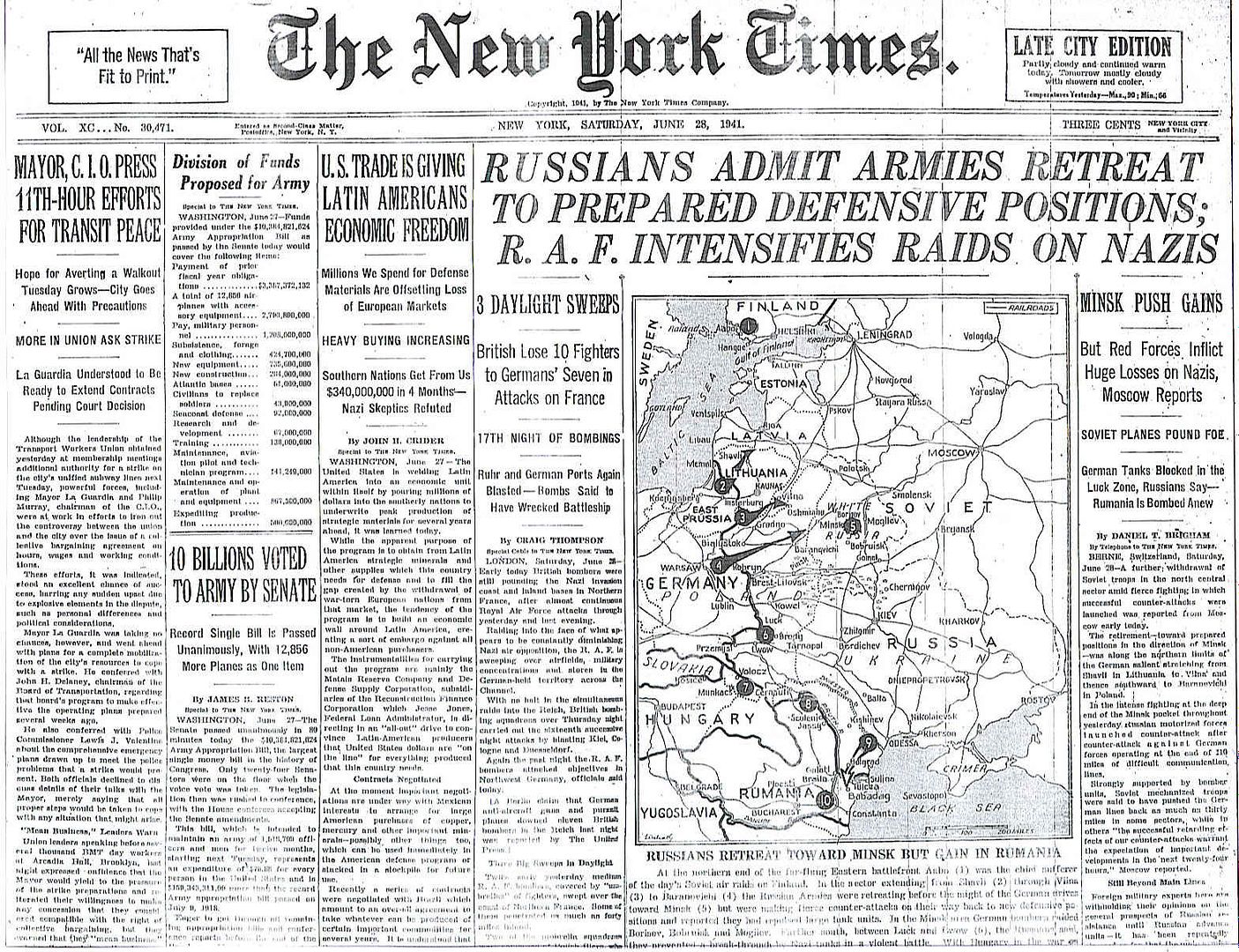
Posted on 06/28/2011 5:57:08 AM PDT by Homer_J_Simpson

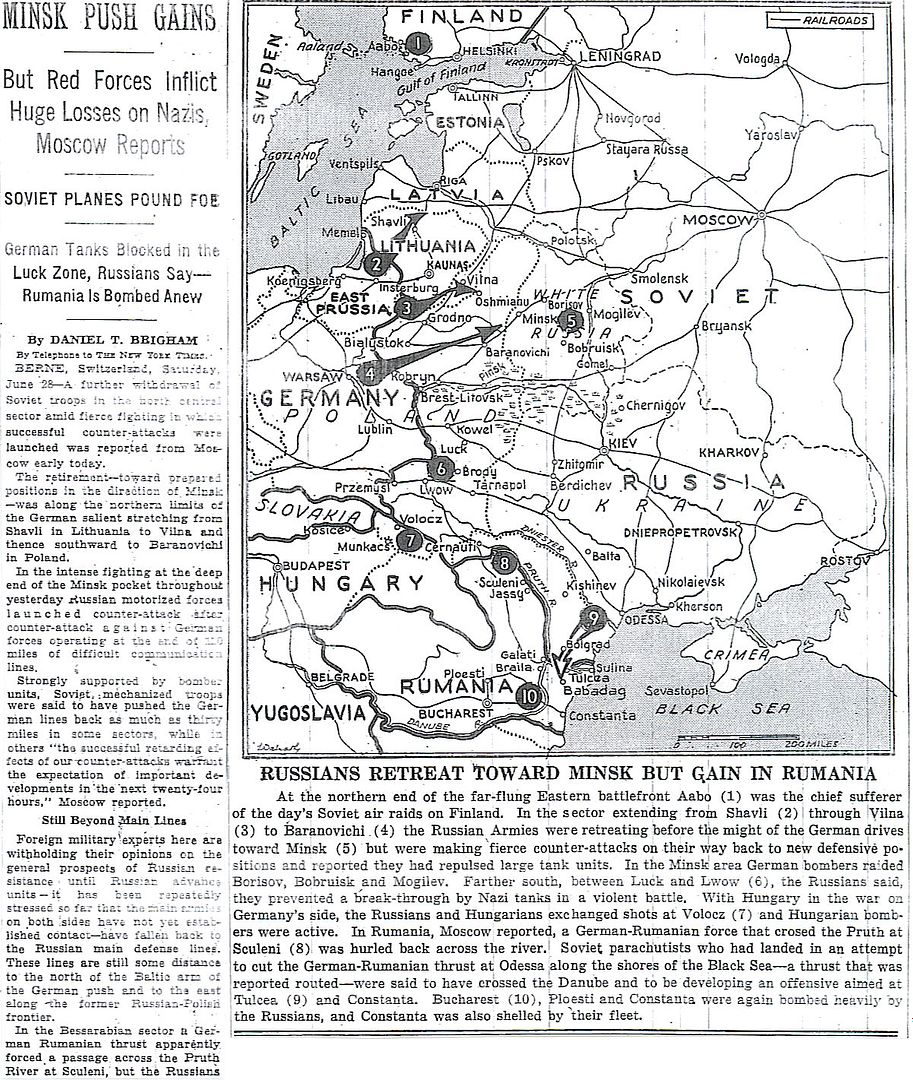
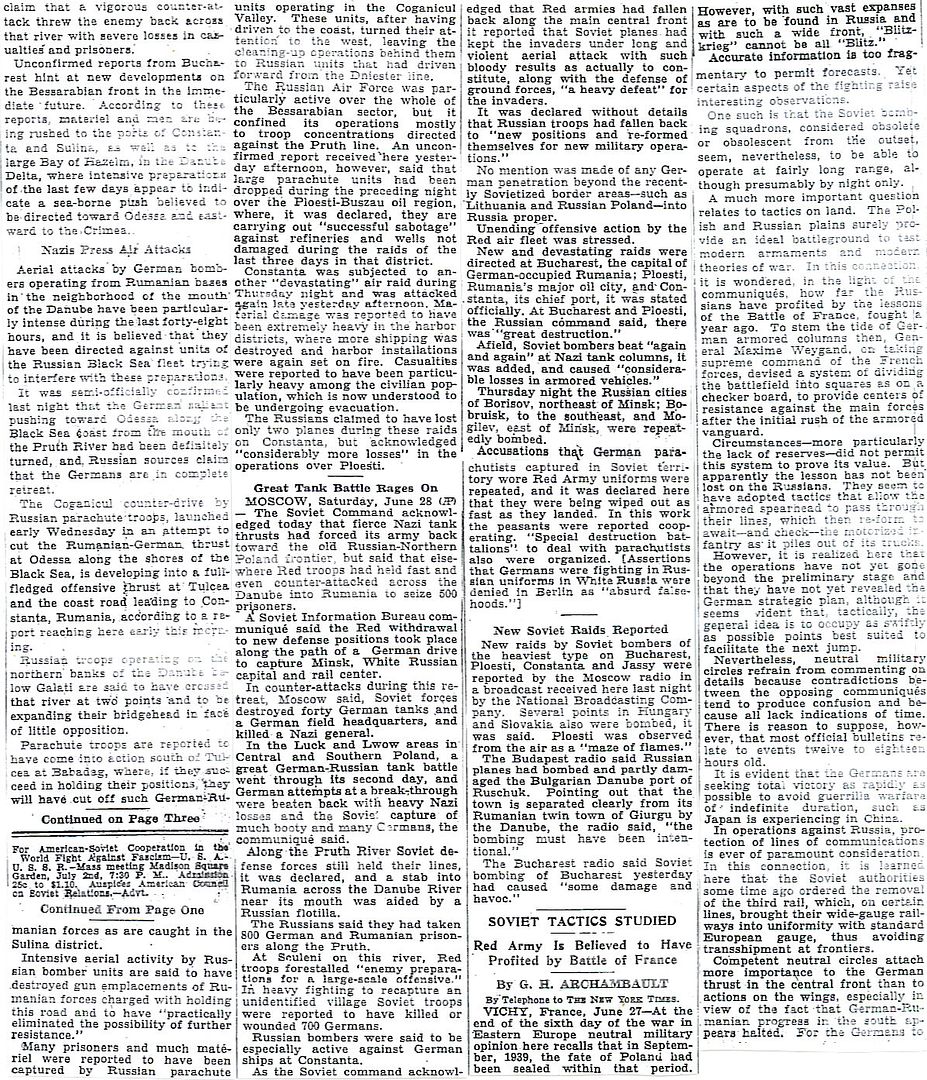

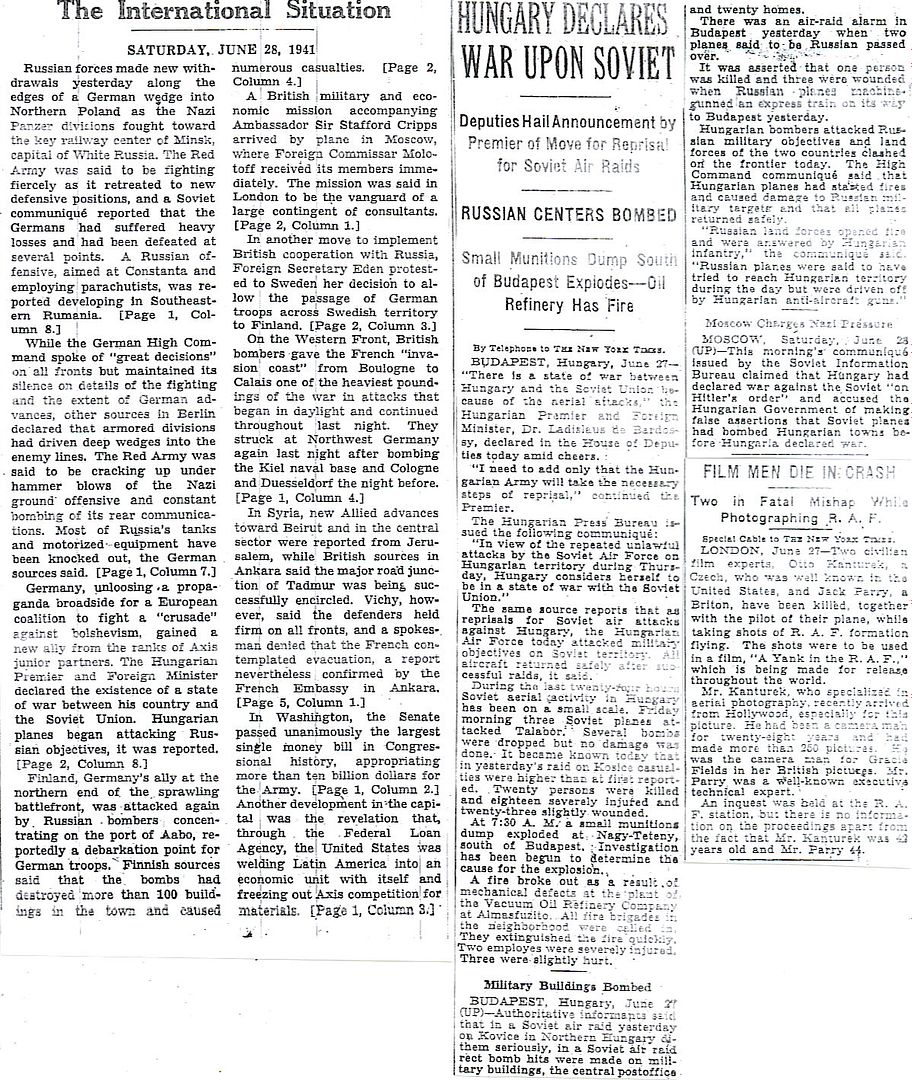
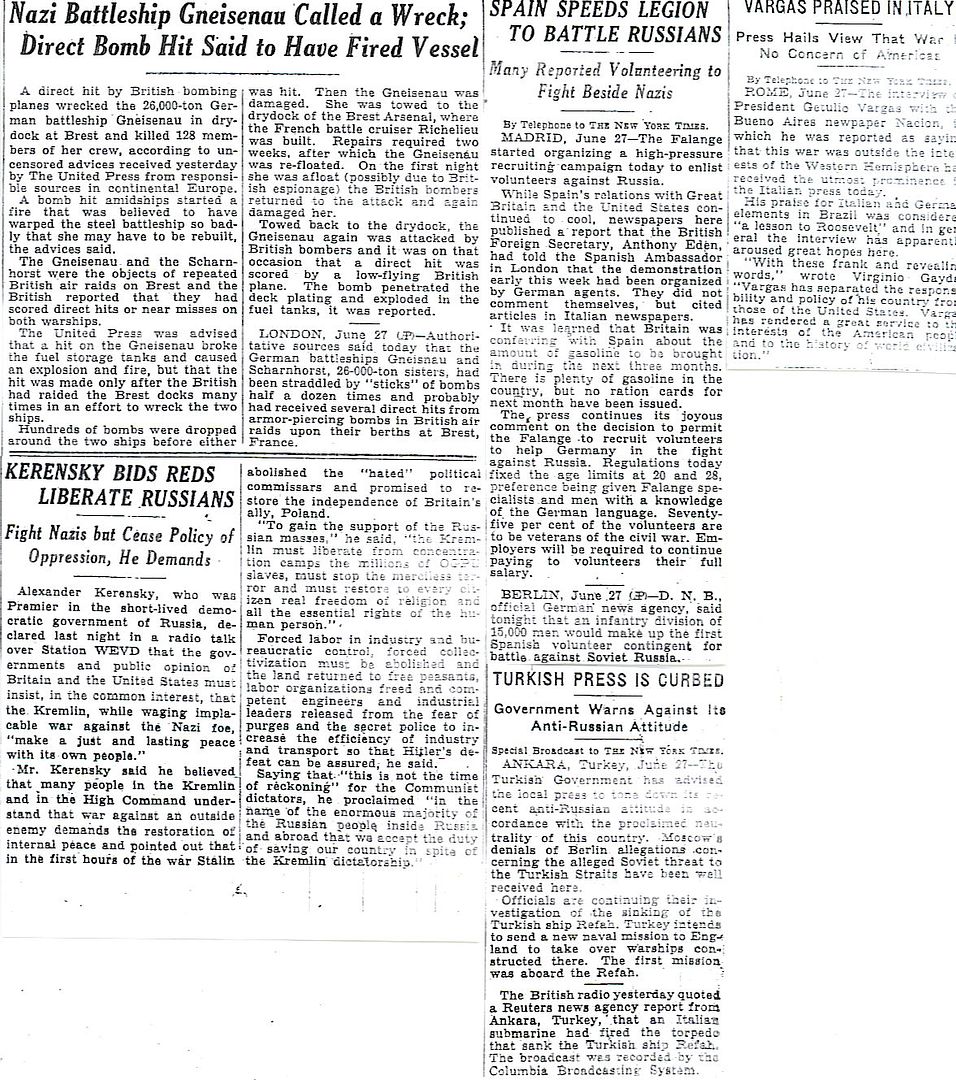
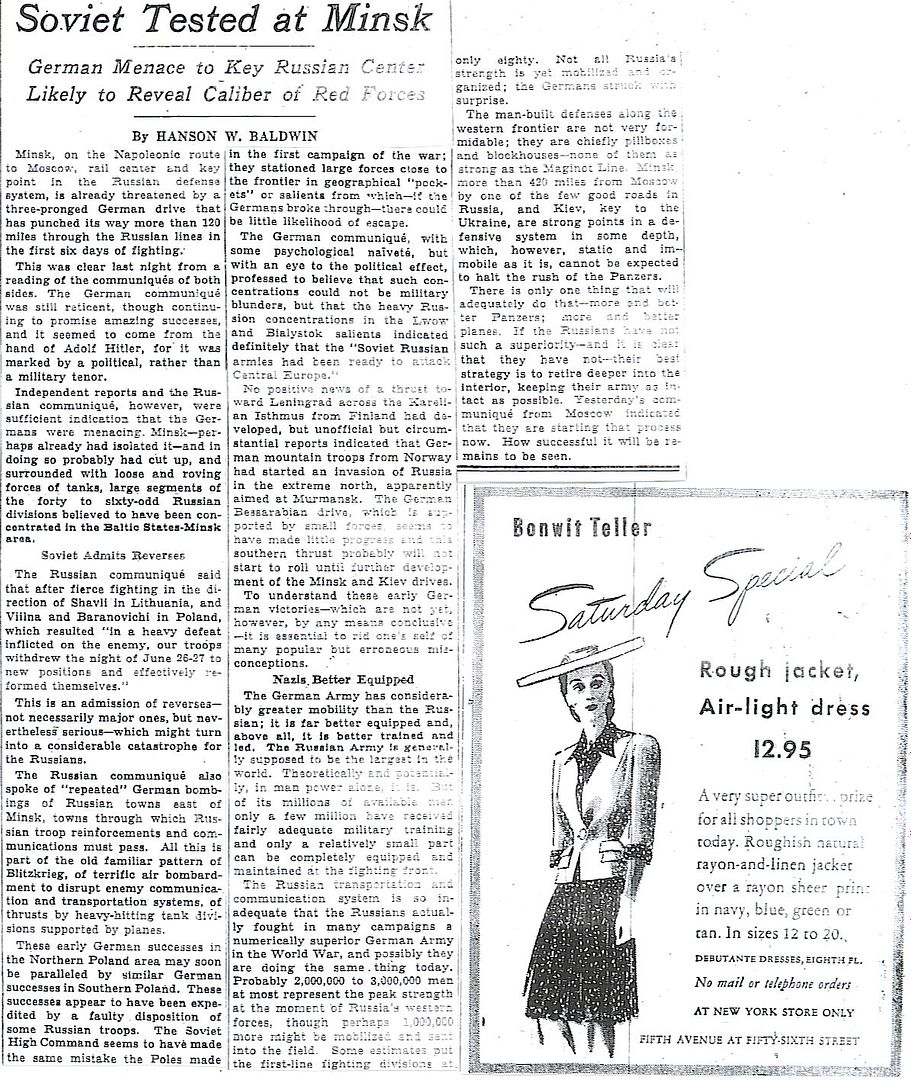
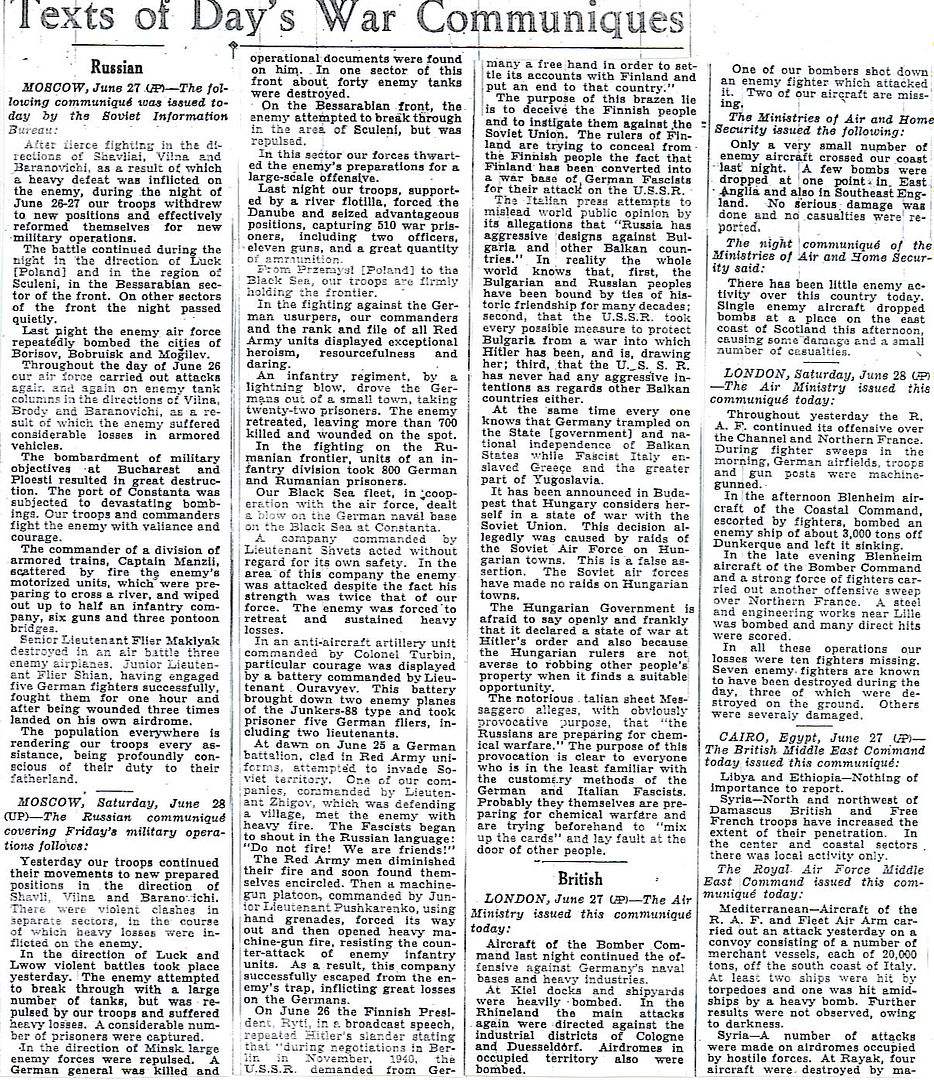
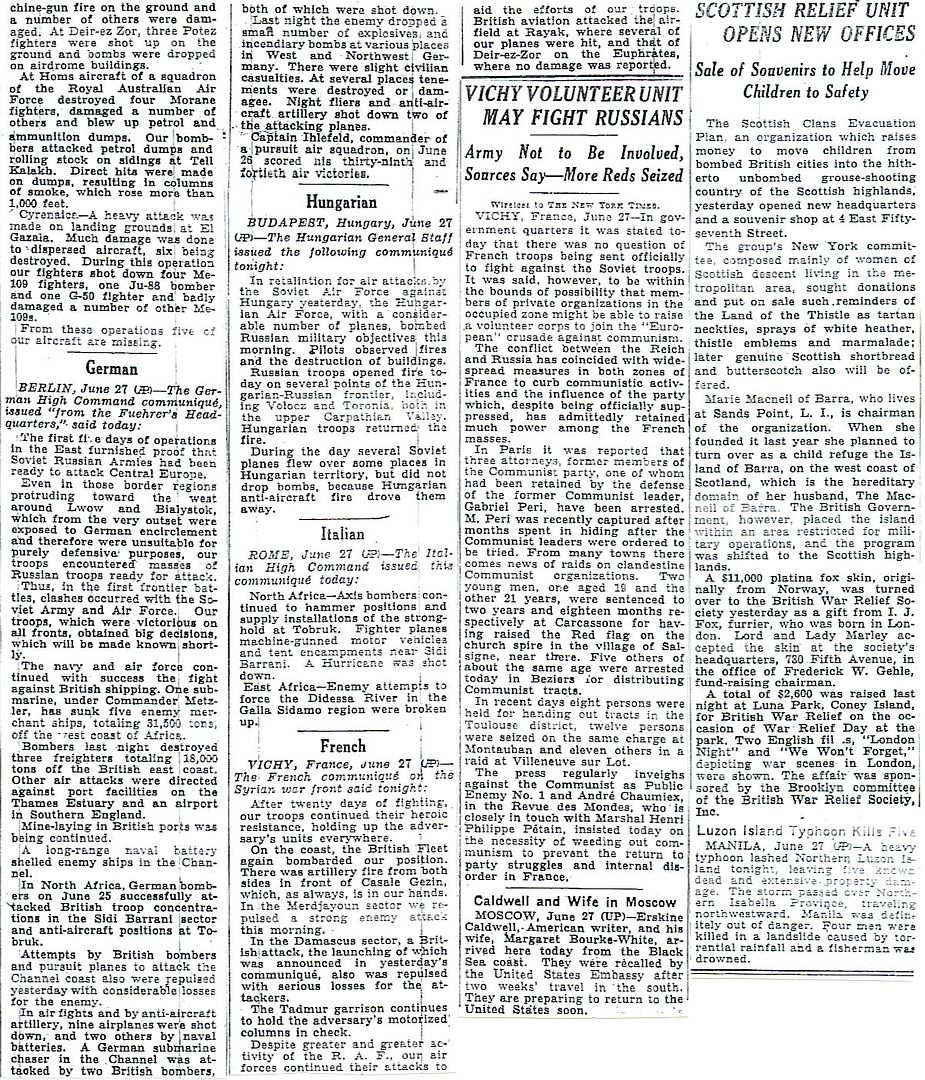
Are your replies #18 and #20 for June 28 or April 28?
Nevertheless, he was intercepted by the Germans near Minsk and put in a POW cage. There he revealed his identity to the officer of the guard.
POTATURCHEV'S information surprised his captors: they had had no idea of the division's fire power. The Soviet 4th Armored Division had 355 tanks and 30 armored scout-cars; the tanks included 21 T-34s and 10 huge 68-ton KV models with 15.2-cm. guns. The artillery regiment was equipped with 24 guns of 12.2- and 15.2-cm. calibre. A bridge-building battalion had pontoon sections for bridges 60 yards long and capable of carrying 60-ton tanks.
Not a single German Panzer division in the East in the summer of 1941 was so well equipped. Guderian's entire Panzer Group with its five Panzer divisions and three and a half motorized divisions had only 850 tanks. But then, on the other hand, no German Panzer division was so badly led or so senselessly sacrificed as Potaturchev's 4th. It was against the remnants of this division that the German units were engaged in such fierce fighting in the forest of Bialowieza.
"That damned forest of Bialowieza!" the men grumbled. The whole of Germany made the acquaintance of this terrible virgin forest, the last surviving one in Europe. Bavarians and Austrians, men from Hesse, the Rhineland, Thuringia, and Pomerania, fought in this green hell. The forest of Bialowieza meant ambush. It was a natural strongpoint in the rear and on the flank of the German forces. There was the village of Staryy Berezov, and, even better remembered, the village of Mokhnata.
Cossack squadrons were galloping across the open country, desperately anxious to gain the cover of the forest. The outposts of 508th Infantry Regiment were trampled down by them. Hooves pounded; sabres flashed. "Urra! Urra!" They got within a hundred yards of the village. Then the 2nd Battery, 292nd Artillery Regiment, smashed the attack with direct fire.
The 78th Infantry Division from Württemberg, the same which later received the title 78th Assault Division, was ordered to break into the green hell of Bialowieza, to comb the forest, and to drive the Russians out towards the intercepting line established by 17th Infantry Division along the northern edge of the huge forest.
The Russians were past masters of forest fighting. The German troops, by way of contrast, had little experience at that time of this difficult form of operation in the uninhabited, swampy forests of Eastern Poland and Western Russia. Forest fighting had been the poor relation of German Army training, for the German Forestry Commission kept a jealous eye on its woods and plantations. They could only be used with great care. As for virgin forests, the Wehrmacht had none at all for training purposes. The Russians, on the other hand, had practiced this type of fighting extensively. Unlike the German infantry, they did not take up position in front of a wood, or on the wood's edge, but invariably right inside it, preferably behind swampy ground. Behind their all-round positions they kept their tactical reserves. In forest fighting, too, the Red Army men preferred the close combat in which they had been trained.
A particular feature of these Soviet defense positions were infantry foxholes which were unidentifiable from the front and provided a field of fire only to the rear; they were intended for picking off the enemy from behind after he had pushed past. Whereas the German infantry would clear lanes of fire for themselves, if necessary by considerable telling of trees— which, of course, meant they were easily spotted from the air —the Russians worked like Red Indians. They would cut down the undergrowth only up to waist-height, creating tunnels of fire both forward and towards the sides. This gave them cover and a clear field of fire at the same time. The German divisions had to pay a heavy toll before they mastered this kind of fighting. Some of their costliest lessons they learned in the forest of Bialowieza.
On 29th June the 78th Infantry Division moved off in three columns of march—215th Infantry Regiment on the right, 195th Infantry Regiment on the left, and 238th Infantry Regiment in the rear, in echelon. Contact was made with the enemy near the village of Popelevo. Here the last formations of General Potaturchev's scattered 4th Armoured Division, together with parts of three other divisions, brigades, and artillery detachments, had been re-formed into a new regiment, brilliantly led by Colonel Yashin. It was a case of hand-to-hand fighting—man stalking man with hand-grenade, pistol, and bayonet. The artillery was unable to intervene because friend and foe were too closely interlocked. Only the mortars were useful.
The afternoon of 29th June saw a massacre. The 3rd Battalion, 215th Infantry Regiment, succeeded in engaging the Russians in the flank and in the rear. Panic broke out. The Russians fled. Colonel Yashin lay dead by a road-block made of tree-trunks. Popelevo was again silent.
On the following day the division was more careful. The gunners pounded each patch of forest before the companies moved in. "Infantry will enter platoon by platoon!" A white Very light meant: Germans here. Red meant: Enemy attack. Green meant: Artillery fire to be moved forward. Blue meant: Enemy tanks. Yes, tanks—even in the forest the Russians employed individual tanks for infantry support.
By evening 78th Infantry Division was at last through that accursed forest of Bialowieza. The Russians had left behind 600 dead. The regiments had taken 1140 prisoners. Some 3000 Soviet troops were being pushed towards the interception line of 17th Infantry Division. In its two days of fighting in the forest of Bialowieza the 78th Infantry Division lost 114 killed and 125 wounded, an appalling killed/wounded ratio for the division thus far in the war.
Two shots of vehicles entering Minsk. Both photos were taken on the same street within a few minutes of each other. They show a Pz.Kpfw.38(t) with fuel trailer and a Sd.Kfz.251, which is carrying a German national flag for air recognition. The half track is equipped with a “Stuka zuB” frame (?)
Captured Soviets beings marched to a POW enclosure near Slonim in late June.
German wounded brought into a regimental clearing station for treatment. June 41-Somewhere near Lemberg.
Yep, got the dates crossed, sorry for that.
Don’t worry about it. I have been known to date correspondence at work with the wrong year. As in 6/28/41 instead of 6/28/11. I pretend it is just a typo so people don’t realize I forgot what century it was for a moment there.

The logistics on the Eastern Front was a major issue from the word go. It goes beyond just the fact that there were different rail gauges between the Russians and the rest of Europe. The larger Russian trains required fewer service points and as a result, the ones that were not destroyed as the Russians retreated were too far apart for German locomotives.
Traveling from the far away (and getting further by the day) rail heads were the motorized supply system which consisted mostly of captured vehicles (Guderian’s motorized support were all French vehicles). Many of these vehicles were not suited for the poor Russian roads and fell into disrepair very quickly. The rest of the logistics, and honestly the bulk of the effort to get supplies to the front were handled by horse drawn supply wagons. Even this was problematic since the German horses were used to a more hearty diet than what could be provided on the Soviet frontier. The oat supply for these horses were often far short of what they were conditioned to handle and the horses fell weak and began dying off faster than they could be replaced by captured Russian horses or horses from Germany.
Loosely translated caption for the above picture:
Prop.-Kp. 612
Archive-No. 5 / 2153
Photojournalists Hermann
Text: Uetrecht
Location: Rosanka
date 06.28.41
5 German soldiers and several Polish Police are betrayed by a Jew, captured by the Russians, and tortured before being killed. These Jews are bring marched away to be shot in retaliation.
Don’t feel bad. The other day I was trying to say 2011 and first said 1911 and then corrected myself by saying 2041.
Incredible pictures. Thanks Larry.
Thanks Cougar, I really appreciate that.

That’s the KV-2. A strange looking heavy tank for sure.
Comments: Prop.Kp. 612 Arch-Nr. 5/2151 Bildberichter: Leßmann
Text: Mehlhorn bei Sokolka 28.6.1941 Zwei als friedliche Zivilisten getarnte bolschiwistische Soldaten wurden in einem Kornfeld aufgestöbert. Diesen Heckenschützen und Saboteuren wird das Handwerk rücksichtslos gelegt werden.
Title: Bild 146-1989-038-35
Headline: Russland, Gefangennahme
Credit: Bundesarchiv Creator: Leßmann Creation Date: 1941-06-28T00:00:00Z
Today, HMS Tartar captures the Laurenberg, a German weathership out of Norway.
On board, they find an ENIGMA machine, but more importantly, an instruction manual on how to change the ring settings, when changing the code wheels.
It was thanks to these documents that naval Enigma messages were read throughout most of July 1941.
)/RetrieveAsset.aspx?instance=IDAM_USHMM&qfactor=2&width=640&height=480&crop=0&size=1&type=asset&id=1076505) Some people have learned of the anti-Jewish Pogrom about to happen in Iasi, Romania, ordered by Ion Antonescu, for tonite, and have painted crosses on their homes, indicating that no Jews live here.
Some people have learned of the anti-Jewish Pogrom about to happen in Iasi, Romania, ordered by Ion Antonescu, for tonite, and have painted crosses on their homes, indicating that no Jews live here.
The Iasi Pogrom:
On Saturday, 28 June 1941, at 9:00 p.m., a flare was shot from a German aircraft above Iasi, signaling the beginning of the pogrom.
Immediately shots were fired from the streets, from houses, and from rooftops in almost every quarter of the town. At the same time, German and Romanian soldiers and police went to houses and businesses throughout the city to round up Jews, torturing and killing many of them.
Those remaining were brought to several collection sites, but primarily to police headquarters. Authorities claimed that those Jews apprehended were Jewish-communists and were believed to have aided the Soviets, but Jews of all ages were taken into custody.
Both the shooting and the round up continued throughout the night, until midday on June 29, when a total of 5,000-6,000 Jews had been assembled.
Then, between 2:30 and 3:00 p.m., a false air-raid alarm was sounded, at which point the assembled Jews were fired on from all directions by the Romanian soldiers guarding them. The massacre continued for several hours, until the executioners were exhausted, and less than half of the Jewish prisoners remained alive.
The survivors were then marched to the local train station, packed into freight cars whose air vents were sealed, and sent on the death train to Calarasi.
A further 1,902 Jews were arrested by authorities in Iasi during the latter part of the day, and they followed the same fate as the first group. The Jews were forced onto another train under similar conditions and sent to Podu Iloaiei, where few survived.
In Central Lithuania, as the Russians retreat ahead of the Germans, the “Lithuanian Activists Front”, mostly local police officials, begin rounding up and murdering those who cooperated with the communists in the deportations and executions of Nationalists during the occupation, especially the local commissars, who are largely Jewish.
This same scenario is going to really play out in Riga, starting almost as soon as German forces arrive in the city.
What Cougar said.
Disclaimer: Opinions posted on Free Republic are those of the individual posters and do not necessarily represent the opinion of Free Republic or its management. All materials posted herein are protected by copyright law and the exemption for fair use of copyrighted works.